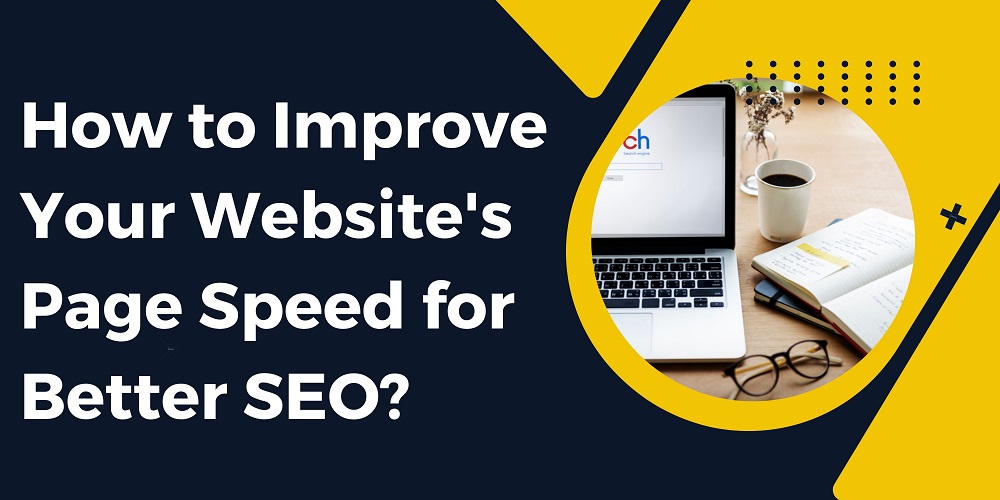
Do you find yourself impatiently waiting for a website to load, only to be met with frustration as the seconds tick by? We’ve all been there, and it’s not a pleasant experience. But have you ever stopped to consider how this sluggishness affects your own website? If you’re looking to boost your website’s search engine rankings and provide visitors with an exceptional browsing experience, then page speed optimization is the answer you’ve been seeking. In this article, we’ll explore the secrets to turbocharging your website’s performance, ensuring faster load times and better SEO results. So, are you ready to leave slow-loading websites in the dust?
Let’s dive in and discover how to supercharge your website’s page speed for optimal success with SEO strategies.
Optimize Image Size and Format
One of the main culprits behind slow-loading web pages is large image files. Optimizing your images can significantly reduce page load time. Here’s what you can do:
Resize images
Use image editing tools or content management systems (CMS) to resize images to their display size on your website. Large, high-resolution images can be unnecessarily heavy, causing slower loading times.
Compress images
Utilize image compression techniques to reduce file size without sacrificing quality. Tools like JPEGmini, TinyPNG, and Squoosh can help you achieve optimal image compression.
Choose the right file format
Different image formats have varying levels of compression and support different features. For photographs, use JPEG, while for simple graphics or logos, consider using PNG or SVG formats.
Lazy loading
Implement lazy loading techniques to prioritize the loading of images only when they come into the user’s viewport, reducing initial page load time.
Example: If you have a blog post with several high-resolution images, resizing and compressing those images can significantly reduce the overall page size, resulting in faster load times.
Minimize HTTP Requests
When a webpage loads, it often requires multiple HTTP requests to fetch various resources such as images, scripts, and stylesheets. Reducing the number of these requests can enhance page speed. Consider the following approaches:
Combine files
Minify and combine multiple CSS and JavaScript files into a single file each. This reduces the number of requests made by the browser, resulting in faster load times.
Eliminate unnecessary plugins
Review and remove any unnecessary plugins, as they can increase the number of HTTP requests and slow down your website.
Deferred loading
Load non-critical resources, such as social media widgets or ads, after the main content has finished loading to improve perceived performance.
Implement HTTP/2
Upgrade your server to support HTTP/2, a newer protocol that allows for parallel and multiplexed requests, significantly improving the efficiency of resource loading.
Example: By combining five separate CSS files into one and three JavaScript files into another, you can effectively reduce the number of HTTP requests from eight to two, significantly improving page speed.
Enable Browser Caching
Leveraging browser caching allows you to store static resources locally on a user’s device, reducing the need to download them with every visit. Here’s how you can enable browser caching:
Set cache headers
Configure your server to include appropriate cache headers, such as Expires, Cache-Control, and Last-Modified. These headers instruct the browser on when to request updated files.
Utilize caching plugins
If you’re using a CMS like WordPress, consider installing caching plugins like WP Super Cache or W3 Total Cache. These plugins streamline the process of implementing caching techniques.
Example: By setting cache headers for images, stylesheets, and scripts, you can enable returning visitors to load your website faster since their browsers will retrieve cached resources instead of downloading them again.
Optimize CSS and JavaScript
Large and unoptimized CSS and JavaScript files can significantly impact page loading times. Implement the following techniques to optimize these files:
Minify files
Remove unnecessary white spaces, line breaks, and comments from your CSS and JavaScript files. Minification reduces file size, leading to faster loading times.
Load scripts asynchronously
Use the “async” or “defer” attributes when including JavaScript files to prevent them from blocking the rendering of the page.
Use critical CSS
Identify and inline the CSS needed for initial page rendering, allowing the browser to style the page faster, while loading the remaining CSS asynchronously.
Example: Minifying a CSS file from 100 KB to 30 KB can considerably improve loading speed, especially on mobile devices with slower internet connections.
Consider Content Delivery Networks (CDNs)
Content Delivery Networks distribute your website’s static content across multiple servers worldwide. This reduces the physical distance between users and your server, resulting in faster loading times. Consider the following:
Choose a reliable CDN
Research and select a reputable CDN provider that aligns with your website’s needs and budget.
Configure CDN properly
Fine-tune CDN settings, such as cache expiration policies, compression, and content delivery rules, to align with your website’s specific needs and improve overall performance.
Utilize edge caching
Leverage the CDN’s edge caching capabilities to store and serve cached content from the server closest to the user, minimizing latency and improving performance.
Distribute static content
Offload static files such as images, stylesheets, and JavaScript to the CDN, reducing the load on your web server and improving page load times.
Example: If your website serves users from various parts of the world, a CDN can deliver static content to them from the nearest server location, minimizing latency and enhancing page speed.
Conclusion
Improving your website’s page speed is vital for both user satisfaction and SEO performance. By implementing the strategies mentioned above, such as optimizing images, minimizing HTTP requests, enabling browser caching, optimizing CSS and JavaScript, and leveraging CDNs, you can significantly enhance your website’s page speed. Remember, a faster website not only improves user experience but also boosts search engine rankings, leading to increased organic traffic and improved online visibility. Prioritize page speed optimization to stay ahead of the competition and provide a seamless browsing experience to your visitors.

About The Author: Karan Sharma is the co-founder & CEO of Kinex Media Inc. He intends to bring a massive transformation in eCommerce web designing & development. His team of talented IT professionals knows the secret of getting huge conversions.
https://www.linkedin.com/in/simantsharma/
https://twitter.com/simantkaran